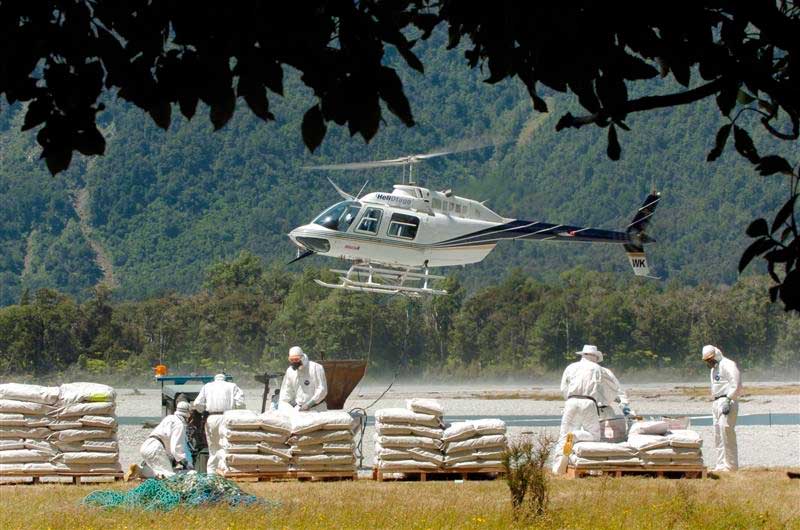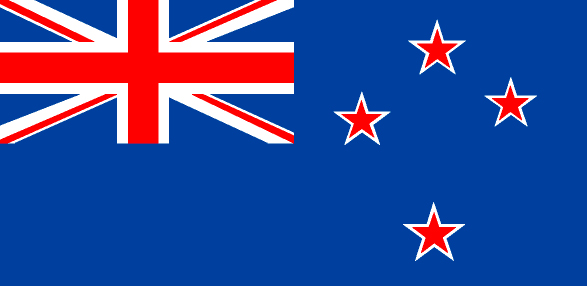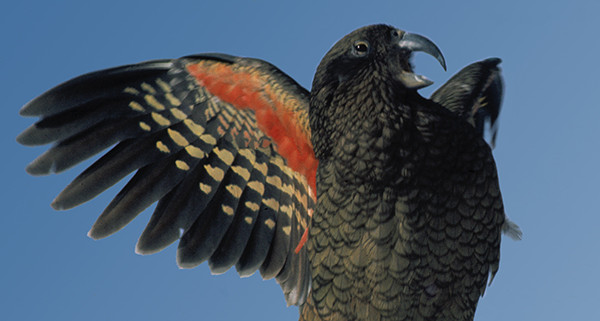Why is TbFree Poisoning Kea Habitat?
TbFree, formerly the Animal Health Board (AHB), explains:
“Despite having a very low human health risk now, bovine TB is still regarded as an unwanted disease in New Zealand because of the negative consumer perceptions and adverse market reactions it could generate. High levels of TB would also cause significant production losses for New Zealand farmers….
“Controlling possums helps to minimise the risk of the disease spreading within the possum population and to livestock. We know if we can keep the numbers low enough for long enough over large areas, we can eventually eradicate TB…
“Currently biodegradeable 1080 is the only control method that can be applied aerially. This means it can be used for quick and effective control in hard to access areas, or large tracts of land, where ground control is impractical” – Tb free website 2014
What do science and history say?
The Animal Health Board, now called TBFree, has no rational basis for using aerial 1080 poison to kill possums.
This was highlighted when the AHB applied in 2007 to continue aerial 1080 poisoning operations, to the Environmental Risk Management Authority:
“No research is cited in the Application that studies the dollar losses occurring from the loss of one or more export markets..Clough & Nixon (2000) conclude…a trade ban would be difficult to sustain under current international trade rules, the risk is very small and the expected value of an avoided trade ban is modest…
“The Application…fails to demonstrate evidence or understanding of economic research on use of 1080, pest control or Tb…this section of the application is unsophisticated, uses crude approaches to estimate even the largest benefits and costs associated with the use of 1080, lacks awareness of many pertinent economic research techniques, seems unaware of almost all relevant economic research.” – Professor Ross Cullen, Economic Expert advising the Environmental Risk Management Authority (ERMA), 2007
“around 3% of all human Tb cases are M. bovis…The Ministry of Health attributes these low rates to herd testing and the widespread pasteurisation of milk…
“even if bovine Tb were prevalent in cattle it would not present a real risk to human health…
”We recommend that in making its decisions, ERMA de-emphasise the importance of bovine Tb”. – NZ Health experts advising ERMA, 2007
“the applicants have provided little factual support to demonstrate efficacy of aerial compared with ground application of 1080 as it relates to possums and Tb control…
“the relative contributions of possums and other wildlife (particularly ferrets) to Tb infection of cattle and deer herds are not clearly defined at this time.” – ERMA Agency, 2007
“there is no evidence to support the suggestion that trade is significantly reduced by not having bovine Tb-free status.” – ERMA Committee, 2007
Localised, farm margin harvesting of all Tb-carrying species would be far more rational than broadscale 1080 poisoning, because
- Tuberculous possums are clustered in relatively small, stationary “hotspots”
- possums (both diseased and healthy) living in forests were found to only travel occasionally onto farm pastures, and none were found to move more than 1300m
“Tuberculosis possums were clustered in “hotspots” and identification and targeting of these high prevalence areas would make control of tuberculosis in wildlife more effective” – S. Norton et al., NZ Veterinary Journal, 2005
“The disease shows remarkable spatial clustering…that can persist over extended periods of time…despite intensive possum control efforts…methods for the future may include…identification of spatial determinants of “hotspots” to allow more targeted population control” – R. Jackson, NZ Veterinary Journal, 2002
“operations to reduce possum numbers in Tb-problem areas would need to encompass at least 1 km of forest adjacent to pasture….
“Where the problem is long-standing and the incidence of Tb in possums is high at the forest/pasture margin (>10%), infection may already be present in the deep forest (Cook & Coleman, 1975), and control may be required further (1-2km) into forest.” – W. Green & J. Coleman, NZ J. Ecology, 1986
- Tb is found in a wide range of wildlife, not just possums. The role of other wildlife in spreading and maintaining Tb infection is not very well known.
“…some deer species and ferrets may act as vectors of the disease, but their role in transmitting TB to livestock is unclear…
“Hedgehogs, pigs, cats, sheep and goats are now considered to be amplifier hosts, and spread the disease to other species only when inspected or their carcass scavenged.
“Tuberculosis has been recorded in a small number of stoats …Disease prevalences are unknown, and estimates of them are difficult, due to the rapid turnover of stoat populations and difficulty in trapping them…
“Tuberculosis has been identified in a limited number of feral goat populations, but none of them have been studied in detail.” – J. Coleman & M. Cooke, Tuberculosis, 2001
After a TbFree aerial poisoning operation, the carcasses of all animals are left for scavengers. This includes rats, stoats, ferrets and pigs, which can all catch and spread Tb:
“In endemic areas, rats have ample opportunity to inhale or ingest M. Bovis bacilli during their scavenging of infected carrion, and of transmitting Tb to other species when scavenged themselves.” – J. Coleman & M. Cooke, Tuberculosis, 2001
Feral ferrets (Mustela furo) and stoats (M. Erminea) are abundant in many regions of the country and are highly susceptible to infection with M. Bovis…the disease appears to be maintained by consumption of tuberculous carrion” – R. Jackson, NZ Veterinary Journal, 2002
“The interaction between pest species is poorly understood. For example, rodent numbers sometimes increase following possum control operations, which may lead to an increase in stoat populations” – G. Nugent et al., Kararehe Kino Vertebrate Pest Research, 2008
“our analysis which showed no decrease in ferret abundance at sites that have been subject to possum control” – S. Norton et al., NZ Veterinary Journal, 2005
“pathology indicates most pigs are infected by feeding on tuberculosis carrion…
“Pigs are wide ranging and often forage in large family groups so whole-group feeding on a single carcass may often amplify the number of infected animals.” – T. Ryan et al., Veterinary Microbiology, 2006
Recent documented evidence points to human error in spreading and monitoring Tb:
“Twelve percent of dairy herds have 500 or more animals…High prevalence breakdowns in such herds have occurred…Movements of animals in-and-out of such herds is a plausible cause, but “stress” leading to immune dysfunction probably also contributes.”
“In terms of TB in Northland, there are currently seven herds…which have tested positive. A high level of TB infection has been found in young stock and there has been movement of infected calves traced to a farm south of Kaitaia…response by TBfree NZ has included…wildlife surveys to assess infection in wild animals such as possums and wild pigs. To date, 47 pigs and 340 possums have been sampled from the Awanui area and no TB infection has been found in wild animals…TBfree NZ are still investigating…findings so far show that dairy cattle sales and stock movements are very complex”
“Dispose of dead stock properly…don’t allow wild animals such as pigs to access open offal pits – this could result in TB transfer to wildlife”
“Infected herds by type at July 2013:..These figures represent a significant increase in infected herds in the North Island but also a small increase in the South Island.”
“Compliance: at the time of this report there are 16 cattle herds 180+ days overdue for testing. This equates to 15 per cent of the national total for overdue tests. A number of these herd owners have been in discussions with the North Island Compliance Manager as they are unable to muster their stock or they have become feral…Unregistered herds are also of concern in the Northland Region.” – N. MacMillian, Northland Regional Council Environmental Management Committee Meeting Tabled Item 30/07/2014
“Tb Free New Zealand says recent cases of the disease in two herds in the Rangitata/Orari area of South Canterbury were a West Coast strain…
This confirms that the herds have become infected from bought-in TB infected cattle…
A wildlife “survey” in the area caught 996 possums, all of which tested free of the disease.” – A. Swallow, Rural News 2013
“With animal movement, in a study of cattle and deer in the Waikato district, it was found that only 10% of cattle herds were “closed”…
“Models of this “population” suggested that the “intensity of disease surveillance” has profound effects on the ability to reduce the number of infected herds (Barlow et al., 1998). As a result, surveillance intensity was increased, and there was a rapid reduction in herd prevalence…
“Accurately identifying all infected and non-infected animals is challenging…
“With M. Bovis infection, particular problems are an extended pre-clinical period, some animals being unable to mount a normal immune response, and waning of cellular immunity after prolonged infection” – T. Ryan et al., Veterinary Microbiology, 2006
Whereas it is not even known how a possum would give Tb to a cow!
“The mode of transmission between possums and livestock is poorly understood and difficult to study. However, dominant cattle and deer have been observed to approach semi-sedated (“sick”) possums, and sniff and mouth them. – J. Coleman & M. Cooke, Tuberculosis, 2001
“Possum-to-cattle transmission is thought to occur when cattle investigate disorientated, diseased possums wandering in pastures close to their bush habitats (R.S. Morris, pers. Commun.) – N. Barlow, Trends in Microbiology, 1985
Final word from science and history- advice unheeded
“This Council recognises the seriousness of outbreaks of tuberculosis in cattle, but urges that the enormous injection of funds into eradication programmes and the large expenditure on control programmes be matched by the provision of adequate resources for further research…
“the cumulative evidence of bird deaths is sufficiently reliable to indicate that there are significant effects on non-target organisms…
“the Council recommends that methods be developed for the disposal of unused baits and poisoned carcasses and that the Crown be bound…
“The Council recommends that the use of 1080 should not be permitted in any significant wildlife area or reserve and especially in takahe/kakapo areas, forest sanctuaries, biological reserves and national parks…
“this Council recommends that appropriate preliminary justification and thorough monitoring processes be a pre-requisite for further 1080 operations…
“control operations utilising 1080 may induce bait shyness, are only temporarily effective, and often create favourable conditions for noxious animals by reducing competition, and releasing nesting sites and feeding areas” – NZ Nature Conservation Council, 1977





